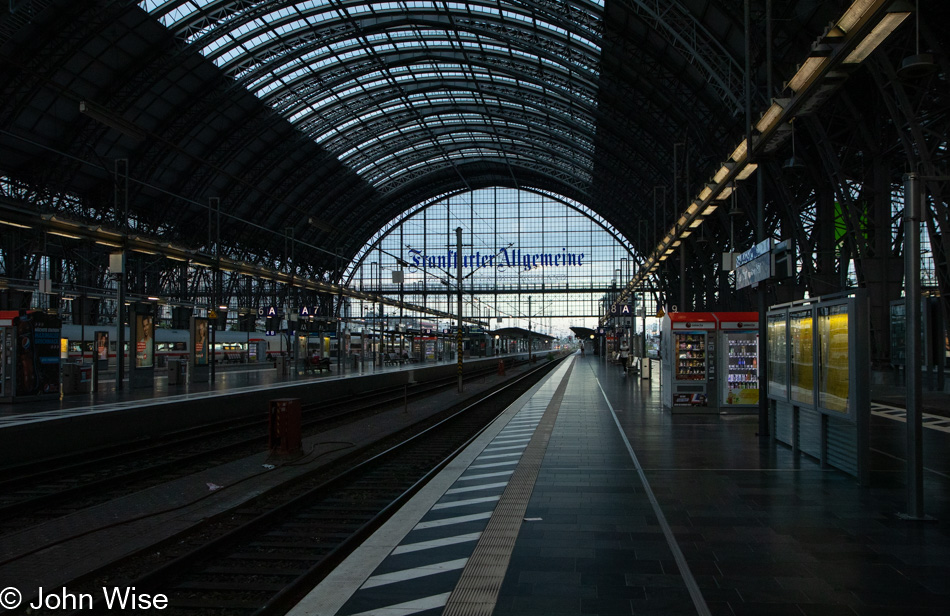
To bed late, early to rise. Neither Klaus nor I were woken by the alarm, but he woke long before I did. Taking an earlier train to the Hauptbahnhof than planned, we were able to grab a bite to eat and coffee casually instead of sprinting through the main train station.
Onboard the RE50 train to Fulda in the quiet 1st class section; we left Frankfurt at precisely 6:26; this is Germany, after all. Travel time is about 90 minutes, but without wifi, things feel a bit primitive. For the next 8 hours, we’ll be on one train or another as we have three connections over the course of the day.

Klaus is my travel companion today. This is the first time he and I have ever gone somewhere together; not only that, it is his first vacation without his wife, Stephanie. It is also our victory lap for having finished everything that needed to be done with our mother-in-law’s apartment. The keys were turned over to the owner ten days early, and he’ll be able to let his next tenant move in early.
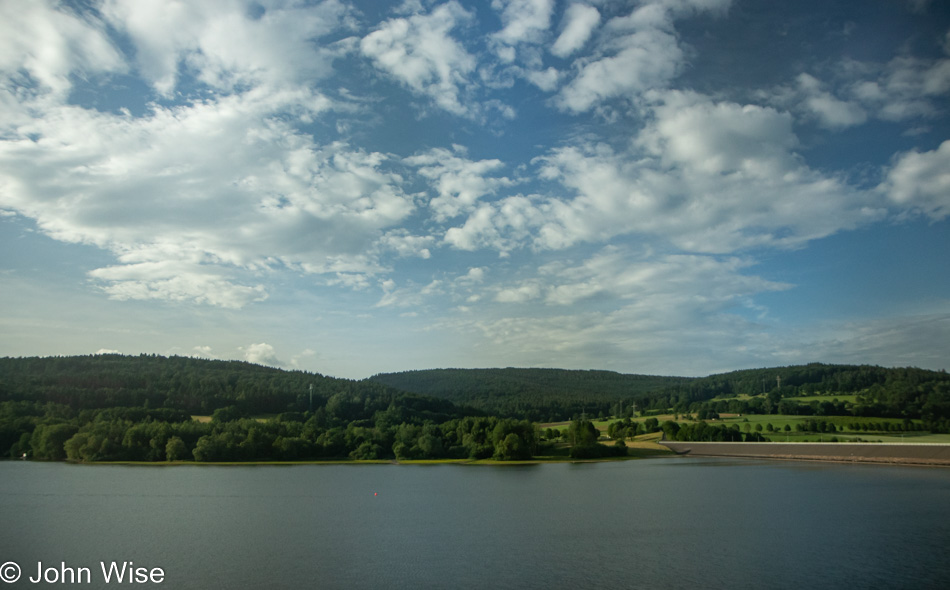
Regarding the 8 hours of travel, we are headed to Husum, Germany, in the far north. This is a fairly good starting point to explore the Wattenmeer (Wadden Sea), which is a shallow body of water of tidal flats and wetlands. When Caroline and I were last in the area, we never saw the sea as low tide makes it disappear, but Caroline did walk in the famous mud. With Klaus and I up in the Wattenmeer until Wednesday, we should have enough time to see many of the sights that we previously missed.

Over the coming few days, I’ll share (because I know how to overdo that so well) much, if not everything, about what we see and experience. With that in mind, here’s a barn on a farm with windmills in the background out the window of the train somewhere between Frankfurt and Fulda.

Ninety minutes later, we are transferring to the train that will bring us to Hamburg for the next leg of the trip.

The train that was supposed to be 20 minutes late turned out to only be 10 minutes late. We are now on the slowest moving ICE (Inter City Express) train ever as we crawl down the track at about 130km/h or 80 mph.

Maybe you were expecting my exceptional photography skills to be on display here. Taking photos from a train window leaves a few things to be desired, starting with clean windows, but we can do nothing about that.
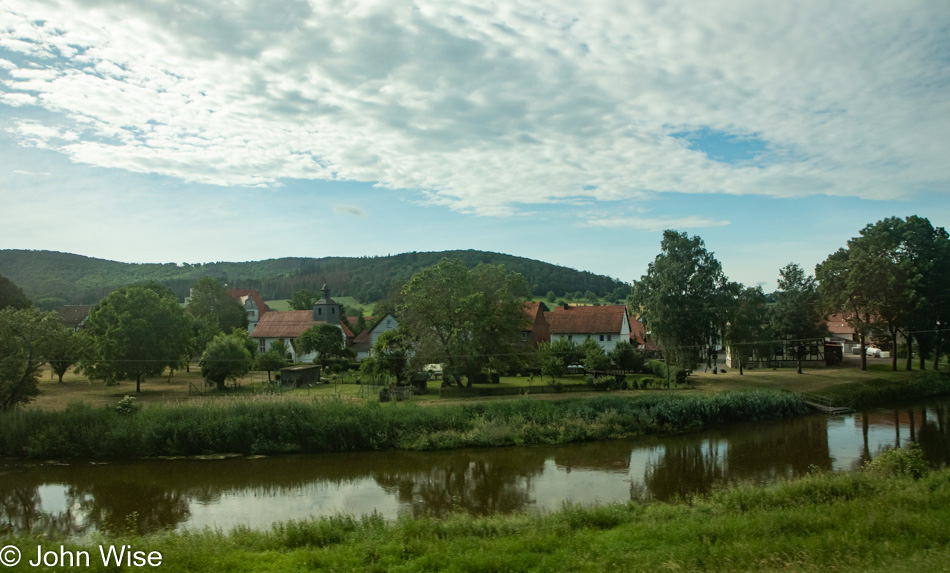
Fortunately, there haven’t been 100 beautiful little villages we’ve passed as we are out in the middle of nowhere.

Just pulled into Gottingen 3 hours after we left Frankfurt. Hannover is our next stop, and then Hamburg. Strange enough, time seems to be flying. The stress that comes with driving your own car makes 3 hours of travel a bit tiresome, while being the passenger just gazing out the window is not only relaxing but also offers the chance for a random photo.

The train has finally picked up speed as we race over along at 221 km/h (137 mph)

The green blur of a bullet train moving along like a bullet.

We were in a tunnel when I took this hence the white streak across Klaus’s eyes; they are lights outside the train as my camera is focused into the darkness, but the reflection jumped back at me. Not the result I expected but not a bad one either. Like a gazelle, we are about to leap into Hannover.
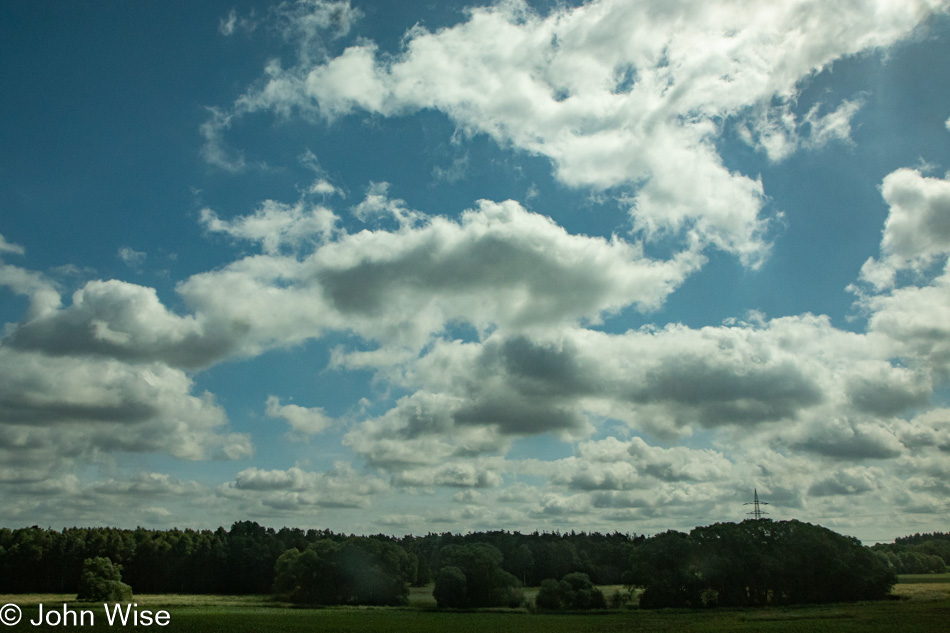
As we inch closer to midday and further away from Frankfurt, we had to give up our unreserved seats on the left side of the train for the sunnier right side where the warmth of the sun is making for heavy eyes. That or the less than five hours of sleep either of us had is playing a role. I guess it goes without saying that my step count is looking ugly, but we should make up for that after we arrive at the sea.
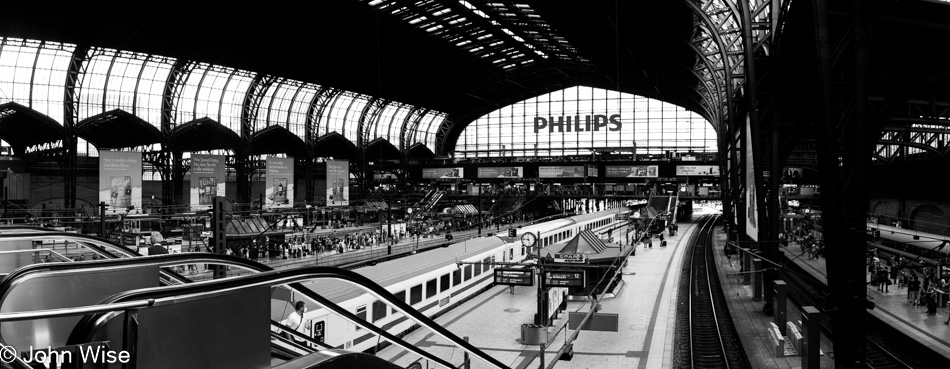
We arrived in Hamburg with almost enough time to spare. Well, we had a minute or two before we had to board the train on the track right next to where we pulled in. The ambiguity of what part of the train was ours confused even Klaus, and we quickly learned we were on the segment of the train going to Kiel and not Flensburg. No problem, we jumped off and headed for “our section,” which was the next car, but the doors were already closed and were not going to reopen as I pushed the button and then the train started to move. This wasn’t me making it go; it was the train saying goodbye to idiots as it pulled away.
The next train leaves in an hour. Time for lunch, which turned out to be as bad as the cup of coffee we didn’t enjoy on the trip from Fulda to Hamburg. So, attention Deutsche Bahn, your coffee is meh, your user experience and user interface are both meh, and now on this regional train with 90 minutes of travel time, we don’t have wifi. Oh, and that part from Frankfurt to Fulda is also 90 minutes, with no wifi, what decade are you guys operating in? What is the incentive to travel by rail if the ability to connect and get fueled up on good coffee doesn’t exist? This begs the question, is this your idea of 1st class ICE service, really?

We arrived in Hamburg to gray skies, but once we were some kilometers north of the city, the clouds started to break up, offering great views of billowy clouds. The cumulous display might be part of the weather forecast that suggested Germany was in for some heavy rains everywhere except Husum. You are looking at rail tracks photographed with a slow shutter to smear them. Next stop, Schleswig, or maybe another photo if I see something spectacular.
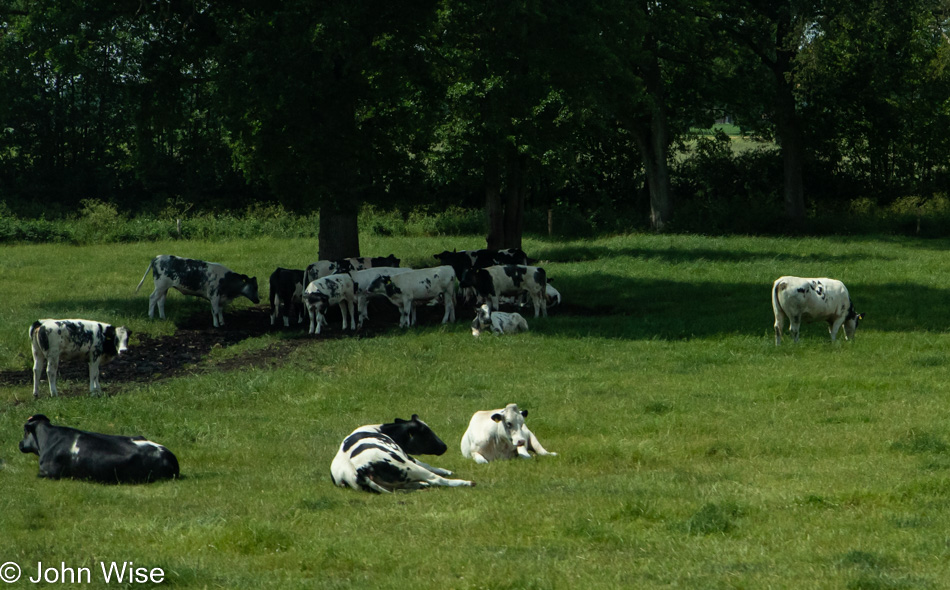
I almost missed taking this photo, and I’m surprised I got any of these cows in the frame. These are the famed Holstein breed of cattle in their ancestral lands: Schleswig-Holstein. The Germans have built these cows for over 218 years using similar processes they’ve perfected in building the Mercedes-Benz. If you see these cows in other lands, be assured they were made in Brazil or Pakistan from inferior parts, as only the Germans hold the patent to these highly engineered robot cows. Final fact: in full gallop, a real Holstein can reach speeds of over 240 km/h or 148 mph.
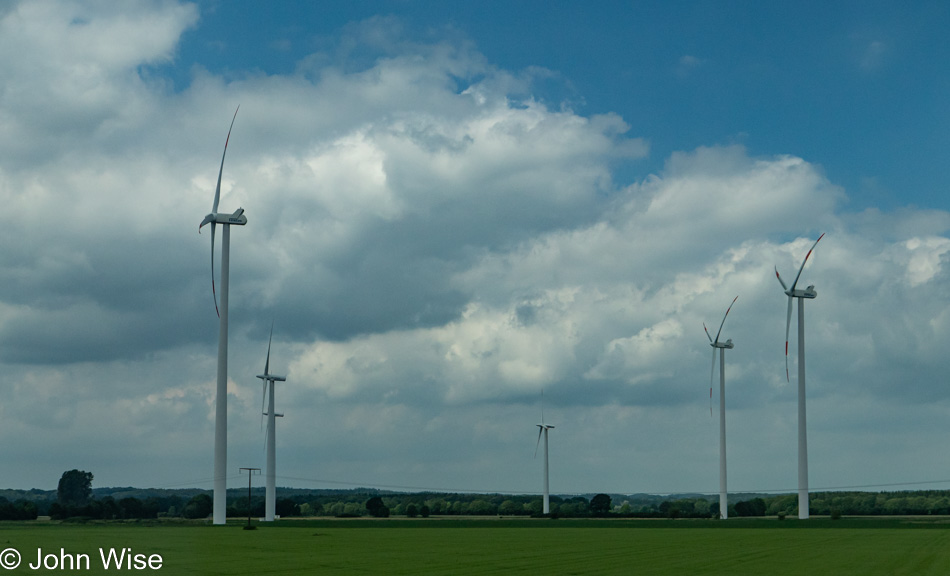
Evidence of Germany’s move to alternative energy has been following us the entire day so far. Wind and solar are scattered over the landscape far and wide, and contrary to German worries about these turbines killing birds, I only witnessed a couple of dozen being shredded by those blades of terror.
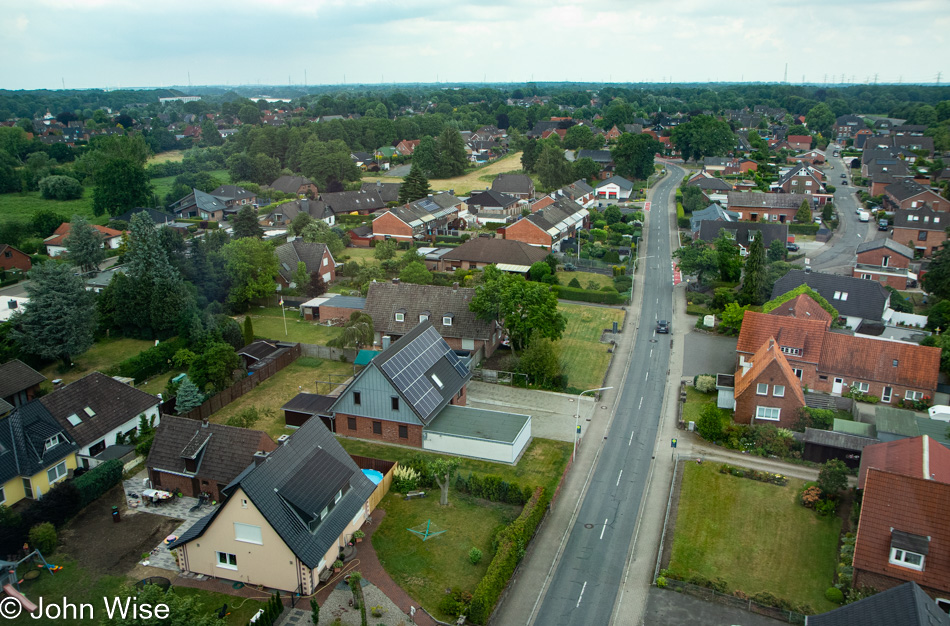
And then there was that moment I realized we’d become airborne, flying over small villages to which access to mass transportation is denied in order to ensure those people never escape. I think I’m happy I cannot look out my window as it appears it’s a straight drop down to the merciless earth below.

Hedeby and Danevirke are the areas I learned about on the website listed here. This strip of land has been settled as far back as the Viking Age and is the narrowest point between the Baltic and North Seas. This also acted as the border area between Scandinavia and Central Europe. I photographed this on our brief stop in Schleswig, which features as a starting point to explore the area, as far as I can tell.
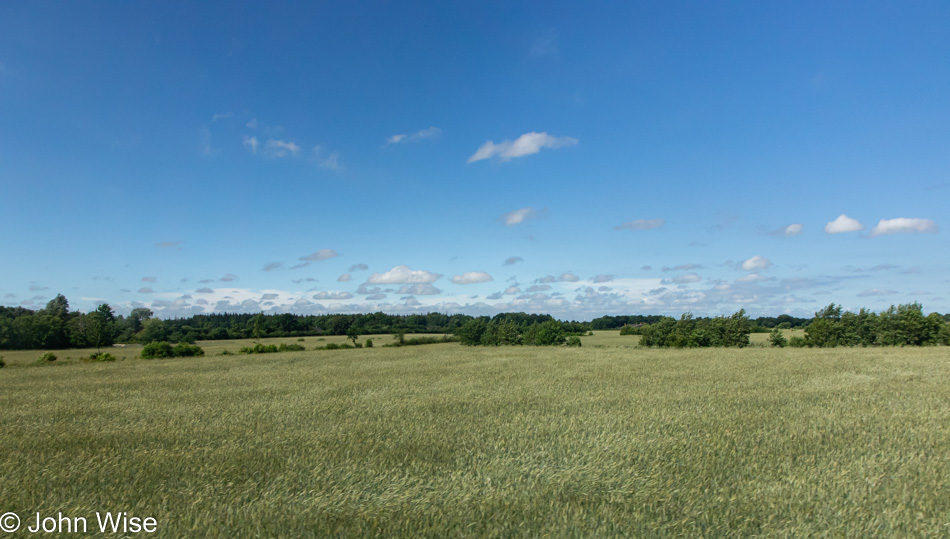
Looking north, about 40 kilometers (25 miles) from here, if you could see that far on this very flat part of the earth, you’d be looking into Denmark. We are on the fourth and final segment of our trip to the top of Europe.
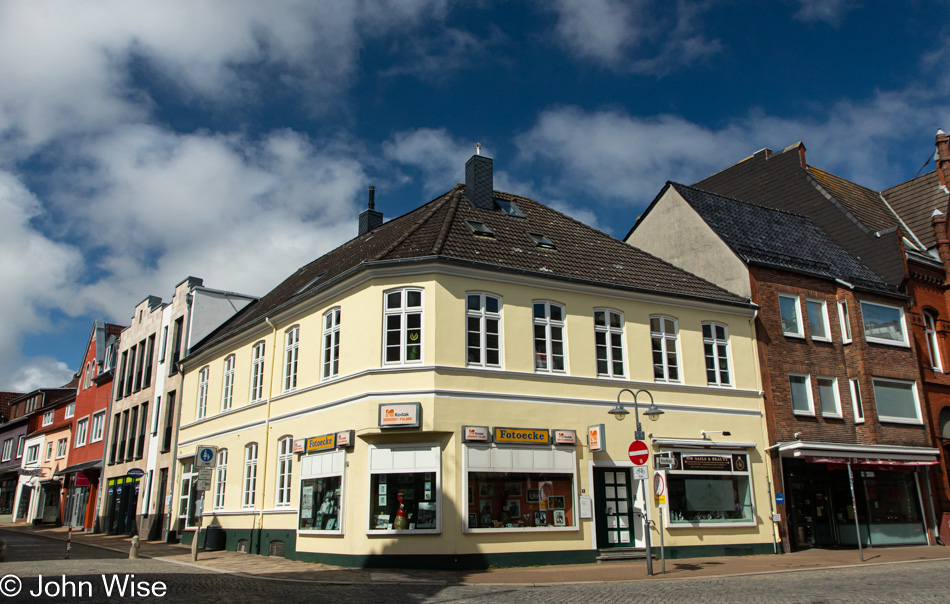
We’ve reached Husum on the North Sea, but before anything else can happen, Klaus has to get a COVID test. Without that, he cannot check into the hotel with me, nor can he eat in restaurants if it proves too cold up here. Then again, he’ll have to get a test at least every 24 hours if he’s to eat in restaurants. While he waits for the swabbing of his sinus, I’m outside, happy I’ve been fully vaccinated. With his test complete, he’ll have to wait about 20 minutes for the results so we head to the hotel to get checked in. By the time our bags are dropped off in our room, his negative results arrive; we show them to the person at the front desk, and we are good for the remainder of our stay here on the edge of the Wattenmeer.

How about a nice 10-kilometer (6 miles) walk before dinner? We didn’t leave with that in mind, but that’s where the trail took us as we left the harbor area, walking towards the sea. Reaching one of the dikes, we went through the gate and saw this sign asking dog owners to keep their hounds on leashes so as not to ruffle the wool of the local sheep.
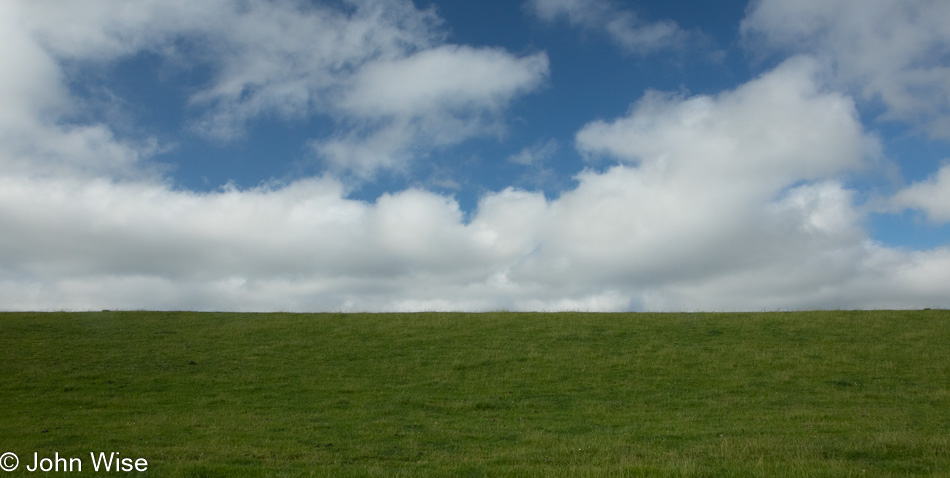
There are dikes that are pooped on by grazing sheep and then there are pristine levees such as this one that, with a little bit of blue sky, look as though they could be a Windows 95 background.
The weather here is a rapidly changing skyscape of racing clouds that change from billowy white to menacing gray, threatening imminent rain, but they, too, just stream overhead and are quickly gone.

There’s so much to see here, and the light is playing a significant role in what get’s photographed and subsequently shared as my photographs shift between dull and vibrant as quickly as a cloud moves from one side of the sky to the other.
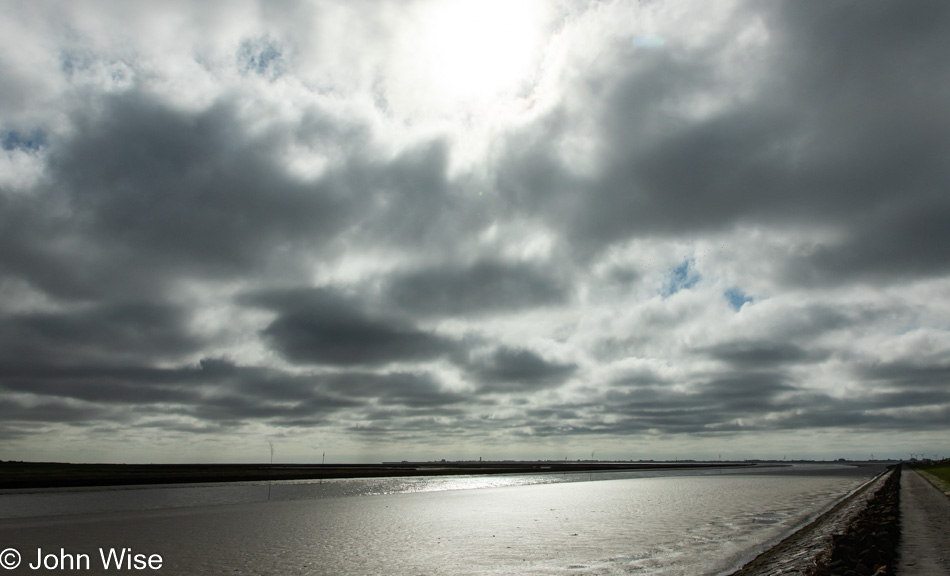
I can’t help but feel I’m looking at the canopy of the world that is forming north of here. These are the clouds that floated out of America, across the Atlantic, passed over the United Kingdom, and are on their way to Scandinavia before retiring in the Arctic. Like whales, they are migrating; only these are leviathans of the skies. You can trust that I don’t really believe that weather and the cumulus that inhabits it work that way, but you also can’t know how my imagination works.
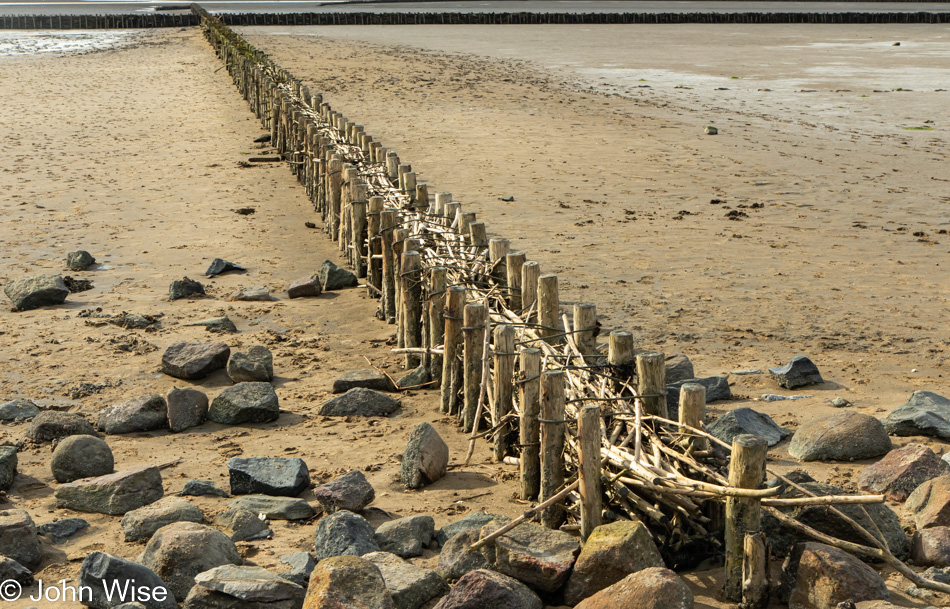
Earlier, I wrote that the Germans are building cows, they also build land using sticks. By limiting the wave action using these water breaks in shallow waters, they can limit erosion and start collecting sediments that extend the land, thus taking from the sea instead of the other way around.
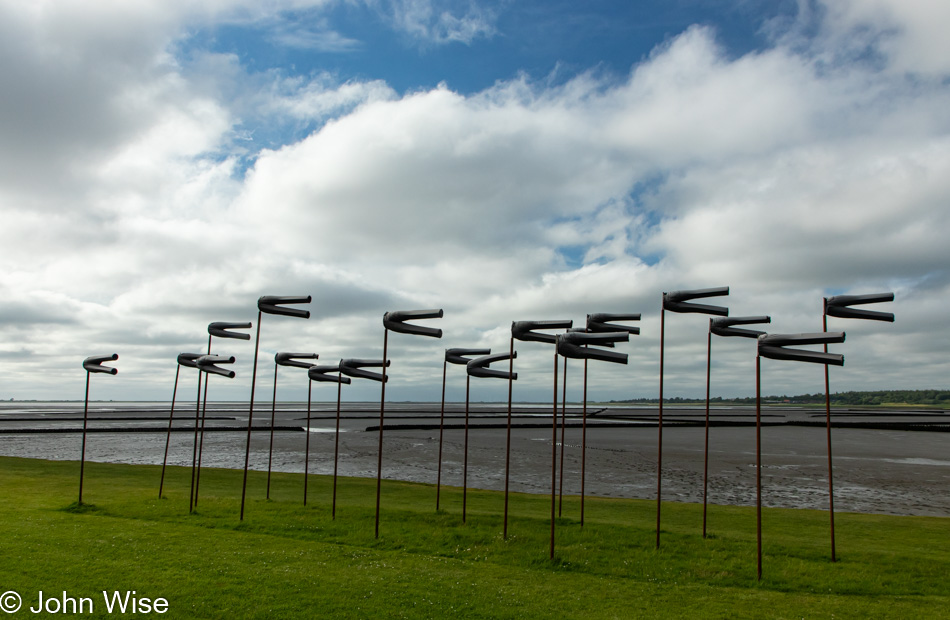
Even at the end of the Earth, you will find art, in this case, wind trousers. The German word “Windhose” means “whirlwind” or “tornado,” so this is, in effect, a pun.

I suppose in some way I promised loads of poop when I showed the pristine dike above, but from this angle and distance, this land, too, appears perfect. Look closely at where your feet are when walking here, though, as evidence of the sheep is everywhere.
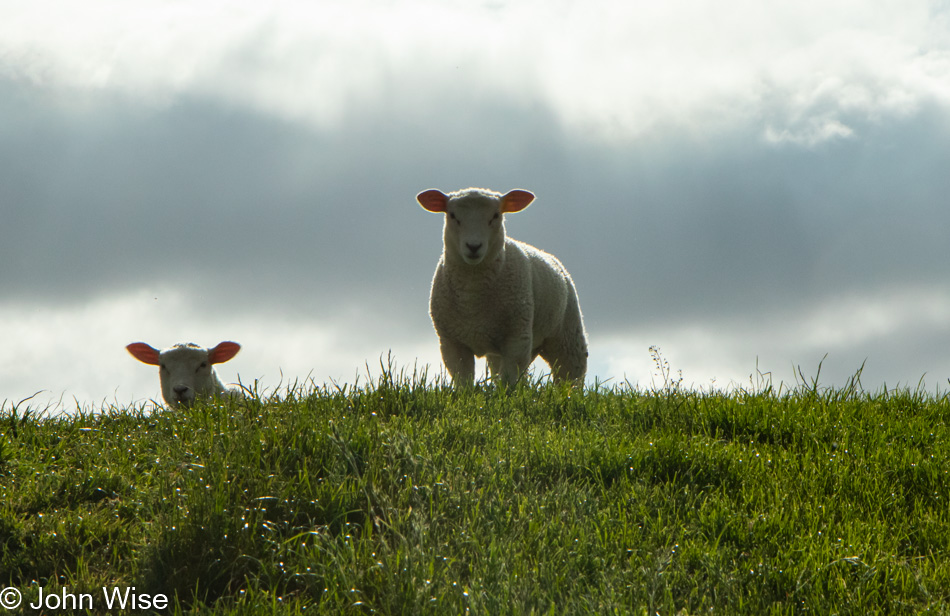
It is not 1:29 p.m. when the Lamb of God appears to John; it is late in the day and nearly evening, though the sun is traveling with us at such a late hour. Looking at this photo I’m struck that maybe this was the sign I was looking for in visiting all the churches and cathedrals on previous journeys. Here was Jesus himself looking into my soul and I gazed upon him as a dumb animal as I’m too blind to see the obvious right before me. So was he the dumb animal, or am I?

We’d almost sat down for dinner at a table right here next to the water when the sun peeked out for another performance, giving me what I thought would be my sunset photo. I was wrong. We were also wrong about sitting next to the water as the wind picked up, and it was feeling cold. This contrast of a temperature of 61 degrees (16c) to the 95 degrees (35c) we were having in Frankfurt was a bit unexpected in how jarring we recoiled from what should have been a pleasantly cool temperature.
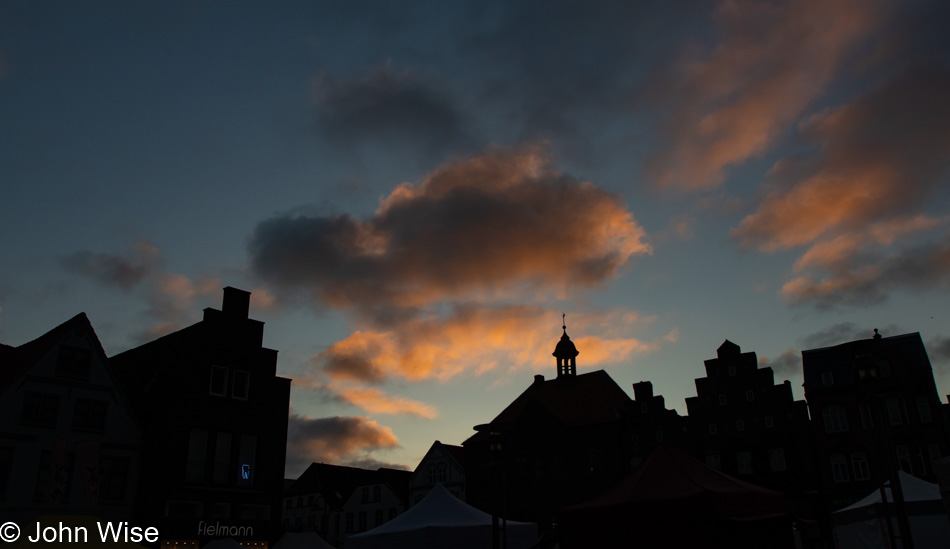
It was nearly 10:00 p.m. when we left the Compass Restaurant where we dined on a couple of great fish dinners. What I forgot to share earlier is that we’d stopped for ice cream before our walk, which was part of what necessitated our lengthy stroll next to the sea. Now with 17 hours into a long day and tired feet that barely carry us back to our hotel, we are just minutes away from falling asleep with wishes to not arise with the first bird song we hear.